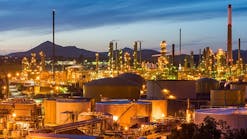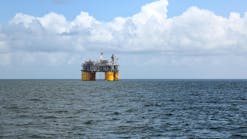Exxon Mobil Corp. has agreed to acquire Pioneer Natural Resources in a $64.5-billion stock deal (including net debt) that more than doubles the oil and gas major’s Permian basin footprint.
Under the deal terms, Pioneer shareholders would receive 2.3234 shares of ExxonMobil for each Pioneer share.
The merger, ExxonMobil’s largest since acquiring Mobil two decades ago, adds Pioneer’s more than 850,000 net acres in Midland basin to ExxonMobil’s 570,000 net acres in Delaware and Midland basins, “creating the industry’s leading high-quality undeveloped US unconventional inventory position,” that, together, hold an estimated 16 billion boe resource in the Permian, the companies said in a joint release Oct. 11.
At close, ExxonMobil’s Permian production volume will more than double to 1.3 MMboe/d, based on 2023 volumes, and is expected to increase to about 2 MMboe/d in 2027. (ExxonMobil had previously set a 1 MMboe/d 2027 target for their Permian operations.)
Coveted acreage, growth ambitions
For ExxonMobil, the deal would address investor concerns around Permian resource backlog, said TD Cowen analysts in an Oct. 11 investor’s note. “The standalone entities were expected to grow 550 kboe/d from 2023 to 2027 while combined guide is 700 kboe/d. The acceleration speaks to the capital efficiency of the combined entities,” the analysts said.
ExxonMobil chairman and chief executive officer Darren Woods noted the benefit of the highly contiguous nature of the tier-one acreage, saying it allows ExxonMobil “greater opportunities to deploy our technologies, delivering operating and capital efficiency as well as significantly increasing production.”
Field digitalization and automation are expected to optimize production throughput and cost, and the contiguous acreage will allow ExxonMobil to drill long laterals—up to four miles—resulting in fewer wells and a smaller surface footprint, the company said.
“Volume is not the objective here. Value is the objective,” senior vice-president Neil Chapman said on a media call, emphasizing that adding continuous acreage to ExxonMobil’s Midland positions is a key factor in the deal. “This is the best deal for ExxonMobil. It allows us to do what we’ve been doing in the Delaware [...] and apply it to [Pioneer’s] resources.”
Pioneer, the largest independent oil and gas producer in the Permian basin, was an early adopter of US shale technology, said Rob Thummel, senior portfolio manager at Tortoise in an email to Oil & Gas Journal, and the acreage position is “highly coveted given its low drilling cost and its size.”
ExxonMobil expects a cost of supply of less than $35/bbl from Pioneer’s assets. By 2027, the company said, short-cycle barrels will comprise more than 40% of the total upstream volumes, allowing the combine to quickly respond to demand changes and capture price and volume upside.
Integrated logistics create value, as light Permian crude from both companies enter ExxonMobil’s refinery and chemical footprint on the US Gulf Coast.
ExxonMobil in this year’s first quarter started up a 250,000 b/d refinery expansion in Beaumont, expanding light-oil processing capacity. Elsewhere, the operator has ethane steam crackers processing low-cost feed to meet growing demand for high-performance chemicals. The 1.8-million tonnes/year (tpy) Corpus Christi chemical complex started up in 2021, the 450,000-tpy Baton Rouge polypropylene unit started up in 2022, and the 750,000 tpy Baytown chemicals expansion project started up in this year’s third quarter.
Environmental best-practices will combine as the operator plans to accelerate Pioneer’s net-zero plan to 2035 from 2050, Woods continued. ExxonMobil currently has plans to achieve net zero Scope 1 and Scope 2 greenhouse gas emissions from its current Permian unconventional operations by 2030. In addition, using combined operating capabilities and infrastructure, ExxonMobil expects to increase the amount of recycled water used in its Permian fracturing operations to more than 90% by 2030.
The deal, subject to customary regulatory reviews and approvals is expected to close in first-half 2024. While Federal Trade Commission approval will be required, TD Cowen analysts note, the “combined entity represents about 10% of total Permian oil production,” levels that “should prove quite acceptable.”

Mikaila Adams | Managing Editor - News
Mikaila Adams has 20 years of experience as an editor, most of which has been centered on the oil and gas industry. She enjoyed 12 years focused on the business/finance side of the industry as an editor for Oil & Gas Journal's sister publication, Oil & Gas Financial Journal (OGFJ). After OGFJ ceased publication in 2017, she joined Oil & Gas Journal and was named Managing Editor - News in 2019. She holds a degree from Texas Tech University.

